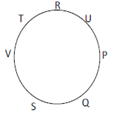| Person | Profession | Berth |
| A | Engineer | Lower |
| B | Pathologist | Upper |
| C | Pharmacist | Middle |
| D | Architect | Lower |
| E | Journalist | Middle |
| F | Lawyer | Upper |
| G | Doctor | Middle |
| Person | Profession | Berth |
| A | Engineer | Lower |
| B | Pathologist | Upper |
| C | Pharmacist | Middle |
| D | Architect | Lower |
| E | Journalist | Middle |
| F | Lawyer | Upper |
| G | Doctor | Middle |
| Person | Profession | Berth |
| A | Engineer | Lower |
| B | Pathologist | Upper |
| C | Pharmacist | Middle |
| D | Architect | Lower |
| E | Journalist | Middle |
| F | Lawyer | Upper |
| G | Doctor | Middle |
| Person | Profession | Berth |
| A | Engineer | Lower |
| B | Pathologist | Upper |
| C | Pharmacist | Middle |
| D | Architect | Lower |
| E | Journalist | Middle |
| F | Lawyer | Upper |
| G | Doctor | Middle |



